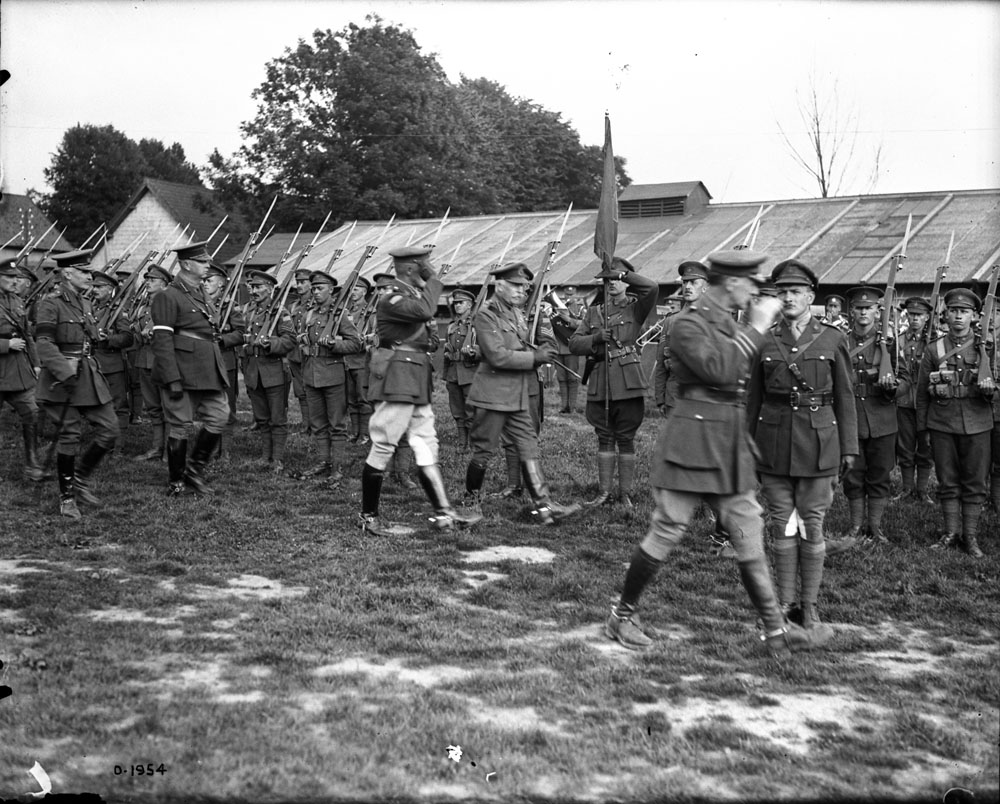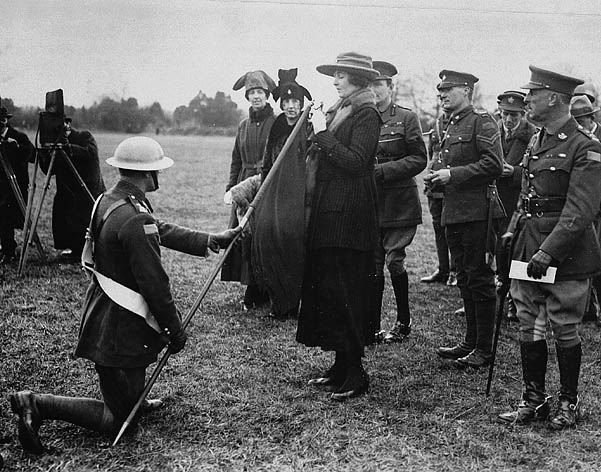
Early Life and Education
Prince Arthur was born at Buckingham Palace, the seventh child and third son of Queen Victoria and Prince Albert of Saxe-Coburg-Gotha. Arthur was named after his godfather, Arthur Wellesley, the first Duke of Wellington, with whom he shared a birthday. Arthur had his own household in Greenwich, governed by a Crimean War veteran, Captain Howard Elphinstone, who acted as a father figure after the death of Albert in 1861. In 1867, Arthur entered the Royal Military Academy in Woolwich and received a commission in the Royal Engineers in 1868.
Military Posting and Royal Tour of Canada (1869–70)
Arthur undertook his first military service posting in Canada from 1869 to 1870, serving as an officer with the Montréal detachment of the Rifle Brigade. He wrote, “Most anxious am I to consider for the time being Montreal as my home, and to lose no opportunity of becoming full acquainted with its institutions, its people, and its commerce.” The Rifle Brigade saw active service in 1870 when the Fenians launched a raid over the Canadian border. Arthur later recalled “...we opened fire and they rapidly broke up.” Arthur later received the Canada General Service Medal for his role in suppressing the raid.
Arthur also undertook royal tours and official engagements during his time in Canada. Before joining his regiment in Montréal, Arthur spent eight weeks on tour, visiting Prince Edward Island, New Brunswick, Québec and Ontario. In 1870, Arthur became the first member of the royal family to attend the opening of the Canadian Parliament.
In Brantford, Arthur was adopted into the Mohawk First Nation and was appointed one of the chiefs of the Iroquois Confederacy with the name Kavakoudge (the sun flying from east to west under the guidance of the Great Spirit). The poet Pauline Johnson, whose father was a chief present at the ceremony, wrote in 1911, “Young Arthur was delighted — royal lads are pretty much like all other boys; the unique ceremony would be a break in the endless round of state receptions, banquets and addresses.”
Arthur enjoyed his time in Canada, writing to his sister Princess Louise in 1878, when her husband Lord Lorne was appointed governor general, that “You know what a Canadian I am in feeling so you can imagine the interest I take in all that is going on there now.” By that time, Arthur had become Duke of Connaught and Strathearn, a title he received in 1874.
Marriage and Children
On 13 March 1879, Connaught married Princess Louise Margaret of Prussia at St. George’s Chapel, Windsor Castle. The couple had three children: Princess Margaret (1882–1920), who married the future King Gustaf VI Adolf of Sweden; Prince Arthur (1883–1938), who served as governor general of South Africa from 1920 to 1924; and Princess Patricia, Lady Ramsay (1886–1974).
Military Career in Egypt and India
Connaught’s decades-long military career included postings around the world, in what was then the British Empire, making him one of the most well-travelled members on the royal family in his generation. In 1882, he became the last member of the royal family to lead a major battle formation, commanding a guards brigade at the Battle of Tell-al-Kebir in Egypt. Connaught then served in India from 1883 to 1890, becoming Commander in Chief of British forces in Bombay (Mumbai).
1890 Tour of Canada
In 1890, Connaught toured Canada with the Duchess, on their way home to Britain from India. They became the first members of the royal family to cross Canada via the recently completed Canadian Pacific railroad. Press coverage of the tour treated Connaught’s journey across Canada as a homecoming, publishing reminiscences of his military service 20 years earlier when he had been a “golden haired youth fresh from the Woolwich Academy and fired with military ardour.”
The itinerary for the 1890 tour included Victoria, Vancouver, Banff, Calgary, Medicine Hat, Regina, Winnipeg, Fort William (Thunder Bay), Toronto, Niagara Falls, Montréal, Ottawa and Québec City. Arthur wrote to Queen Victoria that he especially enjoyed Montréal, where he met with old friends. Victoria was pleased with the public reception to her son’s Canadian tour, writing, “You are so looked up to & beloved.”
Governor General of Canada
Connaught served in Britain during the 1890s, achieving the rank of Field Marshal in 1902. He became Inspector General of the Forces in 1904 and was placed in command of British garrisons in the Mediterranean in 1908–09.
In 1911, Connaught became governor general of Canada, representing his nephew, King George V. The appointment was well received in Canada except for what The Times described a “feeble undercurrent of criticism” because of concerns that formal royal court etiquette would be introduced at Rideau Hall. Prime Minister sir Wilfrid Laurier sent congratulations on behalf of all Canadians.
During his time in Canada, Connaught undertook extensive tours of Canada, visiting Toronto, Kingston, Hamilton and Montréal in 1911 with the Duchess, visiting Winnipeg and the Maritimes in 1912 with daughter Patricia and undertaking a western tour with the Duchess that same year, attending the 1912 Calgary Stampede. Connaught was praised during his tours for combining “dignity with democratic feeling.” The journalist Sir John Willison stated that Connaught “...composed himself with the dignity of a prince, the sympathy of a democrat, and the courtesy of an English gentleman.”
The Duke and Duchess of Connaught commissioned renovations to Rideau Hall, which the Duchess thought resembled, “a gymnasium flanked by a riding school with a very poor little porch connecting the two!!” Rideau Hall assumed its current shape during Connaught’s term as governor general with the Long Gallery, extended greenhouse and royal coat of arms carved in stone. The park was also remodelled with hundreds of trees planted on the grounds.
Their daughter, Patricia, became a well-known public figure in her own right, serving as hostess at Rideau Hall during her mother’s illnesses and accompanying her father on some of his Canadian tours. Patricia became the patron of Princess Patricia’s Light Infantry and designed and embroidered the regimental colours (nicknamed the Rick-a-Dam-Doo) herself. Patricia also exhibited her paintings at Canadian art exhibitions and donated works to Canadian galleries. In 1917, her portrait appeared on the $1 bill.

The First World War
Connaught took a strong interest in recruitment and strategy during the First World War, reviewing regiments, touring hospitals and inspecting auxiliary military services. Connaught was critical of Canada’s wartime leadership. Although he remained on cordial terms with Prime Minister Robert Borden, Connaught privately considered him a weak wartime leader. Borden in turn thought that Connaught spent too much time on “trifling details of comparatively small moment.” Connaught’s efforts to have Sam Hughes, minister of Militia and Defence, dismissed from office prompted criticism that he was interfering in Canadian domestic affairs. Connaught was critical of Hughes’ decisions concerning supplies and recruitment for the Canadian Expeditionary Force and Hughes in turn forbade his staff from discussing military affairs with Connaught without his permission.
Before his departure from Canada in 1916, Connaught laid the cornerstone for the new Parliament buildings after the centre block was destroyed by fire. In a 1916 speech at the Canadian National Exhibition in Toronto, “It is with the greatest regret of both the duchess and my daughter and myself that we are leaving the Canadian shore…I should not like you to think that I am a relatively new Canadian. In coming back, I came to a country which I knew fairly well and which had already shown to me the greatest kindness.”
Later Life
Connaught continued to undertake public engagements and royal tours after his departure from Canada. He outlived his wife, who died in 1917, and his two elder children. He maintained a lifelong interest in Canadian affairs, corresponding with Borden for decades, and entertaining Vincent Massey, the Canadian High Commissioner in London and future governor general, at his home in Surrey in 1940.
Connaught was one of the godparents of the future Queen Elizabeth II. Until his record for longevity was superseded by the Queen’s consort, Prince Philip, Duke of Edinburgh in 2013, Connaught was the longest lived male member of the royal family.
Legacy
Port Arthur (Thunder Bay), Prince Arthur Street in Montréal, the Connaught block in Ottawa and the Connaught railway tunnel under the Selkirk Mountains are named for Connaught. Rideau Hall assumed its current form during Connaught’s term as governor general and the Connaught Cup remains the trophy for marksmanship in the RCMP.

 Share on Facebook
Share on Facebook Share on X
Share on X Share by Email
Share by Email Share on Google Classroom
Share on Google Classroom



